| |

|
| |
|
>>
2007f.y.Principle Investigators,Research Themes
|
>>
2008f.y.Principle Investigators,Research Themes
|

|
| |
Precise synthesis of nano-particulate materials in micro-space
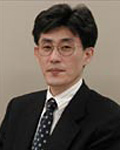
|
Hideaki Maeda
National Institute of Advanced Industrial Science and Technology
(AIST), Kyushu
Group Leader
Nanoparticle technology holds great promise as a bottom-up nanotechnology
in the 21st-century. In this research, various nano-particulate
materials including metal, inorganic and organic nanoparticles
are formed via liquid phase synthesis by using a micro-reaction
technique. The goal of this study is to establish the most appropriate
route for nanoparticles with desirable characteristics, and to
develop the process that can satisfy the various outside demands
for nanoparticle applications. |
|
| |

|
|
Development of bio/nano hybrid platform technology towards regenerative medicine
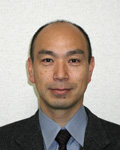
|
Hidetoshi Kotera
Kyoto University
Professor
URL :
http://www.ksys.me.kyoto-u.ac.jp/
In this project, a novel platform technology for the scientific
research of regenerative medicine in cellular and organ levels
are developed, based on MEMS/NEMS technology such as bio-manipulation
in micro/nano fabricated structures. By merging the two fields
of bio and MEMS, creation of new manufacturing methodology for
the next generation biotech, as well as a new application area
of MEMS, is expected. |
|
| |

|
|
Research and Development of Self-organizing Molecular Semiconductors for
Device Applications
| |
Jun-ichi Hanna
Tokyo Institute of Technology
Professor
URL : http://www.isl.titech.ac.jp/~hanna
The fast electronic conduction takes place in nano-scaled molecular
aggregates of liquid crystalline molecules such as smectics and
discotics. This discovery lead to the recognition that liquid
crystals are a new type of organic semiconductors that self-organize
into closely packed and oriented molecular aggregates. In this
study, we aim to establish the scientific and technological basis
of liquid crystals for device applications such as organic TFTs
and organic LEDs. |
|
| |

|
|
Development of high-perfomance organic transistor
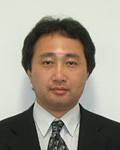
|
Kazuhito Tsukagoshi
National Institute for Materials Science
Principal Investigator
Performance of organic transistor strongly depends on the interface
properties in the transistor. Especially in current short channel
transistors, the contact interface dominates the transistor properties.
The interfaces must be fully understood to control the organic
transistor operation. This allows us to realize short channel
organic transistor with stable operation, and eventually increase
operation performance. We will unveil and develop basic transport
properties of the organic transistor for a future plastic electronics. |
|
| |

|
|
Development of Manufacturing Processes of Supramolecular Nanodevices for
Practical Gene Therapy
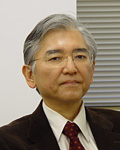
|
Kazunori Kataoka
The University of Tokyo
Professor
URL : http://www.bmw.t.u-tokyo.ac.jp/
To realize safe and effective gene therapy, we are going to develop
supramolecular nanodevices with multiple smart functions integrated
into a nanometric-scale through the self-assembly of nanomaterials
elaborated by advanced polymer synthesis. Intensive study will
be done to confirm the functions and safety of nanodevices justified
for their practical clinical applications. Also, we will establish
efficient manufacturing processes for such smart nanodevices.
The goal of this project is to establish new basis for the practical
use of nanodevices in the treatment of three major diseases of
cancer, cardiovascular diseases, and movement disorders in aged
society. |
|
| |

|
|
Autonomous Reaction Control in Solution Plasma for Application to Nanosynthesis
and Nanoprocessing
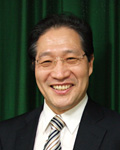
|
Osamu Takai
Nagoya University
Director&Professor
URL :
http://eco-t.esi.nagoya-u.ac.jp/~takai
“Solution plasma” stands for discharge in liquid. The features
of the plasma are quite different from discharge in gas phase.
Recently, “solution plasma" is expected to be a novel reaction
field. In this study, we develop new generation methods of “solution
plasma" in nanobubbles in order to explore the possibility of
the application to material processing. We also aim to establish
the fundamentals of “solution plasma” by developing qualitative-quantitative
analysis method for excited states and chemically active species
in the solution. Finally, we design and create a new reactor
for “solution plasma" with an autonomous reaction control device. |
|
| |

|
| |
| |

